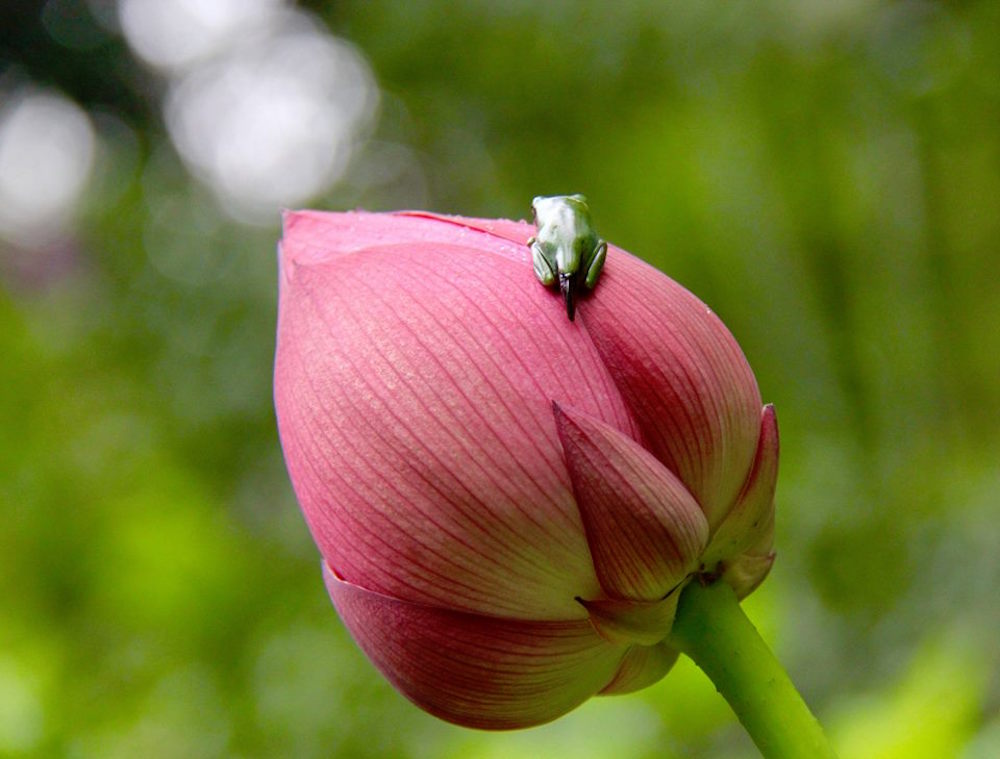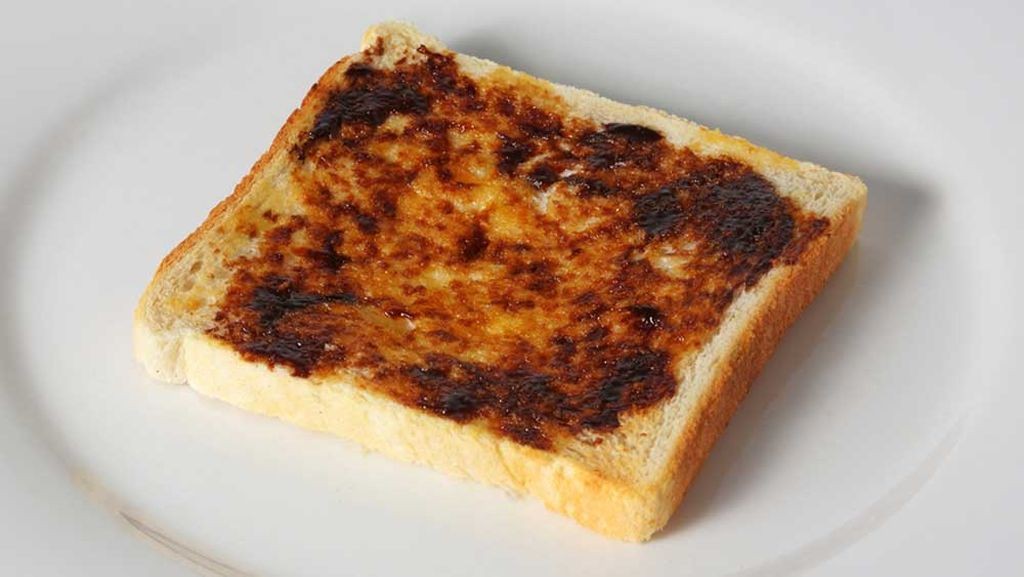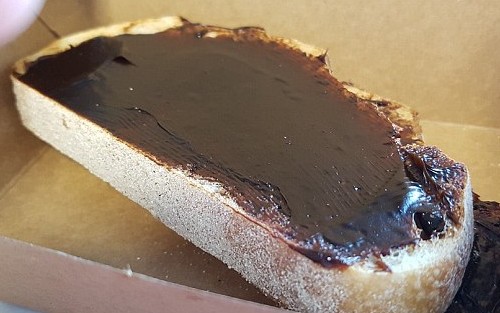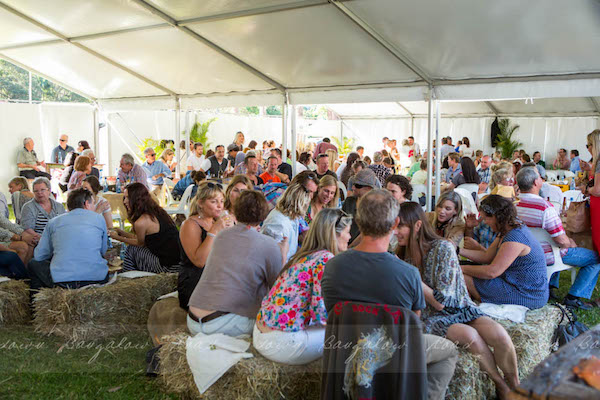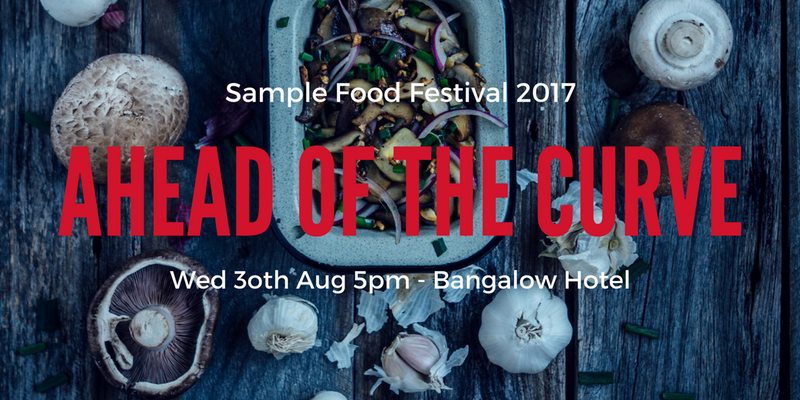The post A green tree froglet makes the world a brighter place appeared first on .
]]>The post A green tree froglet makes the world a brighter place appeared first on .
]]>The post Robert Drewe on why these days it’s a dog’s life appeared first on .
]]>Robert Drewe says he’s a dog lover, but there’s limits. And they’re being stretched…
In my day I’ve owned intelligent, obedient, affectionate and adventurous dogs. I’ve also known lolloping, disobedient, crazy dogs that were as dumb as a bag of hammers. Once I even wrote a book about a beloved dog. So before your hackles rise, let me say that I’m a dog lover.
Nevertheless, we’re stretching a friendship these days, we humans and dogs. Have there ever been so many dogs in public places and underfoot – their leashes entwined around café table and chair legs — in spots meant for human activities? Even for food consumption?
On that point, when did “walking the dog” change from one or two kilometres of exercise at the park or beach to 50 metres through a crowd of shoppers on the footpath on Saturday morning — from the car to the cafe?
Another question. Why the fascination with weirdly-designed genetic experiments that are cutesy variations on the poodle? To look at, some of these doodle dogs remind me of the alien bar scene in Star Wars. And don’t get me started on women with fashion-accessory dogs (doglets, really). How degrading for the wolf’s first cousin to be carried in a handbag!
But creepiest question of all: Why do so many people want a fur baby anyway?
Designer dogs are comparatively recent. In my childhood, back when dogs were animals, the only exotic ones were Old English Sheepdogs, Afghans and Dalmatians. Fox Terriers, usually fat and threadbare, belonged to old codgers in pubs. Old ladies had Silky Terriers and an occasional Pekinese or Corgi. German Shepherds (we called them Alsatians) were feared for their alleged savagery. Cattle dogs were mistrusted because they ran from behind to nip you as you walked to school. (Those were the days of walking to school, too. How yesteryear can you get?)
Family dogs always had a dash of Kelpie and assorted bits and pieces. They were allowed on the street without a leash. You’d see them on TV displaying their lovable personalities by running onto the pitch and disrupting a Test match or football game or Royal visit. They enjoyed a solemn ceremony and were hard to catch. For some reason they were always black dogs.
Black dogs were the only ones to disrupt important events, but we kids had another scientific rule that applied to all dogs’ behaviour: Pointy ears, bites. Floppy ears, stupid.
Faithful companions, family dogs followed you on your bike, and waited outside the school till home time. They roamed the suburbs with doggy friends and chased cars if they felt like a run, and defecated at will. (Doggy-poo bags? Are you kidding?) Until 2012, however, dogs weren’t allowed into shops or cafes, which displayed signs forbidding them.
Somewhere along the line, perhaps when local councils tightened up rules about stray and unfenced dogs, the average suburban dog ceased to be just another outdoor knockabout kid and turned into a feminised indoor doll-animal. (This caused macho chaps of the biker persuasion to react by breeding dogs they thought captured the essence of their complex personalities. Hence the pit bull.)
If there was any doubt about how much Australians love pets, consider this statistic: more of us live with a dog or cat than with a child; 50 per cent of Australians share a house with at least one dog and/or cat (of those pets, 38 per cent are dogs and 23 per cent cats.) Whereas only 35 per cent of us live with one child or more aged under 16, most of them eventually house-trained.
Australians spend $12 billion a year on pet food, grooming, vet fees and insurance for their animals, making the pet care industry a major growth area.
Interestingly, the fascination with poodle mixes doesn’t extent to pure poodles. Presumably, if the poodle mix is chosen because poodles are intelligent and don’t shed hair, a pure-bred poodle should have it all over the Labradoodle or whatever for smartness and hair retention. But, no, everyone wants one of the 150 doodle dog variations (at $2000 a pup) on the market.
So we now have such appallingly named dogs as the Jack-a-Poo (Jack Russell and poodle); Schnoodle (schnauzer and poodle); Pooghan (Afghan and poodle); Cocker-Poo (Cocker spaniel and poodle); Bossy-Poo (Boston terrier and poodle); Irish Doodle (Irish setter and poodle); Golden Doodle; (Golden Retriever and poodle), Rottle (Rottweiler and poodle); Poogle (Beagle and poodle); and, my least favourite, the Daisy Dog (Bichon Frise, ShihTzu and poodle).
So what to do if your naughty Bossy-Poo or Cocker-Poo or Jack-a-Poo or Pooghan poos on the carpet? I don’t think the old tap with a rolled-up newspaper would work as punishment. I suggest a delicately furled Vogue or Gourmet Traveller magazine.
For more information on Robert Drewe’s latest novel, Whipbird, and his other books go here: penguin.com.au/authors/robert-drewe
The post Robert Drewe on why these days it’s a dog’s life appeared first on .
]]>The post Warning: Tamper with Vegemite at your peril, writes Robert Drewe appeared first on .
]]>After only six months of Vegemite deprivation overseas in the eighties I began thinking of it constantly. I badly needed a fix. Intending visitors from Australia were begged (eventually commanded) to bring jars with them. No one took my pleas seriously. The Vegemite-less weeks and months ticked on.
At last! From a friend’s luggage appeared the cheery red and yellow label of my childhood! That whiff of yeast! The familiar surface sheen! The strong odour, the salty taste! With my urging, bemused French acquaintances were soon gamely trying Vegemite on their baguettes; wary but polite Californians and Canadians were spreading Vegemite on their rolls. They all said it was disgusting.
It wasn’t that they couldn’t get terribly keen on Vegemite – they thought it the most revolting foodstuff they’d ever encountered. It failed at every level: looks, smell, texture, taste. To them it resembled glistening dark stuff not fit for repeating in a family newspaper much less human consumption.
I felt hurt on Vegemite’s behalf. And Australia’s, too. It was like they’d scorned our beaches, wines, weather, Don Bradman, Sidney Nolan, Patrick White and Phar Lap. I was defensive. I disparaged their stupid foreign breakfast spreads: Marmite and Cenovis, peanut butter and jelly. Chocolate, for goodness sake. Nutella. Any more British derision and I would’ve brought up breakfast black pudding.
Then I tried a calmer, more educational approach. The secret, I tried to explain to them, one passed on from generation to generation of Australians over the breakfast table, was to appreciate the subtlety and delicacy of Vegemite.
This will come as no surprise to those of you who are reading this at breakfast with a trusty jar of Vegemite close at hand. “For a start,” I informed my foreign friends, “Butter first.”
“Then what you do is dab a little bit here and there over the buttered bread or toast,” I instructed. “You never smear it on thickly. That’s a Vegemite no-no. Stifle the natural urge to cover the entire slice up to the edges. Use a light hand, and only the tip of the knife, and just speckle the Vegemite gently and randomly over the toast.”
Casually, even with a touch of devil-may-care, but serious intent, I demonstrated the approved method. “Like this,” I said. “You mustn’t coat the bread. (My goodness, you’re not painting a wall or laying cement with a trowel!) Try for the desired stippled effect. The acid test is this: if you have correctly applied your Vegemite in sporadic flecks the buttery surface of the bread or toast should still be intermittently visible underneath.”
Of course, I went on to remind them they were dealing with an actual foodstuff and, all appearances aside, not changing the oil filter on their car. I explained après-Vegemite etiquette, passed on sternly from mother and grandmother. To never put a Vegemite-encrusted knife back into the butter (or margarine, if you insist) container.
A question arose and was answered. “Yes, it’s permitted for the various Vegemite dabs and the previously spread butter to run together on a warm slice of toast, to even recklessly swirl and intermingle, as on an artist’s palate. But never allow them to intermix in the butter dish.” Even Australians disliked the look of that, I told them.
Did they take any notice? Not at all. Especially the Americans. They were so used to lavishing peanut butter over everything that they smothered Vegemite on the test slice I provided. Well, they deserved what they always get, a yeasty slap in the face.
Well, we got Vegemite back from them earlier this year when the dairy company Bega bought Mondelez International’s Australia and New Zealand grocery and cheese business.
Nostalgia aside, the reason Vegemite is on my mind this week is that Bega is now attempting to take Vegemite upmarket with a new, more expensive version, Vegemite Blend 17, sold in precious artisanal packaging that includes an unnecessary cardboard box, a gold-coloured lid and a price tag of double that of a traditional jar.
Asked what happened to Blends one to 16, Vegemite’s marketing director, Ben Hill, explained: “The name Blend 17 simply refers to the year 2017 we have released it in.”
Oh, dear. Remember Vegemite Singles, iSnack 2.0, Cheesybites, My First Vegemite, Chocolate-and-Vegemite. All recent Vegemite marketing failures. Tamper with it at your peril. You don’t need a more affluent demographic. Everyone likes it as it is.
Robert Drewe’s latest novel, Whipbird is published by Penguin and is available here: penguin.com.au/books/whipbird
The post Warning: Tamper with Vegemite at your peril, writes Robert Drewe appeared first on .
]]>The post Robert Drewe on why he’s never going to Burundi appeared first on .
]]>Three times this week my household has been woken at two a.m. by phone calls from Burundi. We’ve never been to Burundi. Nor do we know anyone from Burundi. To be honest — and I hope Burundians don’t take this the wrong way — I’m determined never to step foot there.
It’s not just being woken up three times at two a.m. by Burundian callers, who then swiftly hang up, that has influenced my decision not to visit Burundi. The Department of Foreign Affairs doesn’t want me — or any other Australians — to go to Burundi. They not only strongly warn against it, they say that if I’m in Burundi already to get the hell out.
Why? My Burundi knowledge was sketchy, limited to grim news reports of 300,00 Tutsis and Hutus slaughtering each other there and in neighbouring Rwanda in the 90s. So eventually I did what anyone does when Burundi phones them three times a week in the middle of the night: I Googled Burundi.
The news wasn’t favourable. The former German and then Belgian colony is a landlocked country in Central Africa, one of the world’s poorest and most violent nations, struggling to emerge from 50-years of ethnic-based civil war, ongoing conflict with Rwanda, assassinations and genocide.
It’s also beset by widespread disease (yellow fever, malaria, HIV/Aids, cholera, filariasis, plague, sleeping sickness, meningococcal, TB and — for anyone attempting to swim in Lake Tanganyika — schistosomiasis). Also malnutrition, banditry, Al Shabaab terrorists, armed rebels, carjackings, kidnappings, drought, floods, landslides, landmines, road blocks, over-population and almost complete de-forestation. Think of something really bad, anything at all, and Burundi’s got it.
Anything pleasant to offset this dire state of affairs? Well, without the unspeakably brave ministrations of Doctors Without Borders, and foreign aid, which provides nearly half the nation’s income, average life expectancy would doubtless be lower than the present 50 for both sexes.
On a United Nations index called the World Happiness Report, which considers such variables as real GDP per capita, social support, health, life expectancy, personal freedom, and perceptions of corruption, Burundi comes equal last (154th) – the equal unhappiest country on earth — with its neighbour, the Central African Republic.
Even beleaguered, war-torn Iraq (117th), Afghanistan (141st) and Syria (152nd) are happier places than Burundi. (By way of contrast, Norway comes first in happiness and, counting one’s blessings, Australia is ninth. America is 14th and Britain 19th.)
The Burundi media is heavily censored and any criticism is regarded as treason. You can’t go for a jog in Bujumbura, the capital, unless you register with the government and join a jogging club. Then you must jog in one of nine approved venues. The police may have some questions about your jogging: “How many people will be jogging with you? At what time? Give us their names.”
In their dire circumstances, perhaps you can’t blame the Burundians for talking a leaf out of Nigeria’s infamous book and joining the scamming industry. Because that’s what their dead-of-night international phone calls are about.
The scam, originating in Japan, is called Wangiri, meaning “one ring and cut”. Mostly you receive a call deliberately in the middle of the night when the recipient is disoriented: the phone gives a single ring or two before the caller disconnects.
The scammer will have hired an international premium rate number (IPRN) from a local phone company. The trick is to get you to call back on the same premium-rate number. You’re probably thinking you missed an important call (from overseas — it must be important!). When you call back the unfamiliar foreign number (Burundi’s prefix is +257) your call is taken but the person on the line doesn’t talk to you.
You’re sitting there in your pyjamas, blinking at your mobile, saying, “Hello, hello, hello, is anybody there?“ Eventually, receiving no answer, you get frustrated and hang up. By then you’ve lost quite a bit of money. You’ve been charged higher than regular calling rates, and the revenue earned is then shared between the telecom operator and the owner of the number from Burundi. Or maybe from Malawi (+265), Nigeria (+234), Tunisia (+216), Russia (+7), Belarus (+375) or Pakistan (+92).
According to Scamwatch, run by the Australian Competition and Consumer Commission (ACCC), 155,035 Australians were scammed — by all methods — of $83,563,599 last year.
The biggest losers, mostly males, lost $32,278,469 to jobs and investment scams. The second biggest losers lost $25,480,351 to dating and romance scammers. The victims were mainly (presumably lonely) 55 to 64-year-old women.
Maybe we’re finally waking up to the dreaded Nigerian scammers. They only made $1,404,108 out of gullible Australians in 2016. No figures were available on the Burundians. But we didn’t call them back.
Robert Drewe’s latest novel, Whipbird is out now: penguin.com.au.whipbird
The post Robert Drewe on why he’s never going to Burundi appeared first on .
]]>The post Get your taste buds ready for this year’s Sample Food Festival appeared first on .
]]>Twenty-six of the region’s best restaurants and caterers will produce $5 and $10 tasting plates inspired by their signature dishes – a fraction of the cost of dining in their well known establishments.
Award-winning Sean Connolly (The Balcony Bar, Byron Bay), will have a signature plate on offer while TV’s Paul West (Foxtel Food Channel’s River Cottage Australia) and original Ready Steady Cook chef Matt Golinski will battle it out in the Olsson Salt Celebrity cook off.
Being held in the picturesque village of Bangalow, 10 kilometres from Byron Bay, the Festival will also play host to more than 100 lifestyle exhibitors including local growers, artisans and boutique distilleries.
Renowned brewery Stone & Wood will offer a range of beers with Cape Byron’s Brookies Gin and the Tweed Valley’s Ink Gin joining the line up.
Festival founder Remy Tancred said the Festival is designed to celebrate the region’s vast array of top quality farmers, producers, chefs and artisans. “There will be cheese-makers, macadamia farmers, spice artisans, Asian street food specialists, fruit growers and dozens more delicious opportunities to try our region’s amazing fresh produce,” said Remy. “We have live music, baby animals for the little ones, cooking demonstrations, gifts and home wares as well as the chance to try to best food from our amazing region.”
Le Cordon Bleu’s Blue Ribbon and logo would be known to almost anyone with an interest in food and beverages. Now in its fifth year, the Le Cordon Bleu Master of Gastronomic Tourism is the only post-graduate degree of its kind available in Australia. Talking to festival goers about the Masters of Gastronomic Tourism is the key motivation for Le Cordon Bleu’s involvement in Sample 2017.
The ‘MGT’ is designed so that students can explore the ‘gastronomic tourism experience’ from business studies and academic perspectives, add their own creative input and create graduate opportunities for work or further study.
With the exception of our MGT Residential, now an annual three-day series of gastronomic adventures hosted by Le Cordon Bleu and current students (often working professionals), the degree is delivered entirely online. Graduates of the program typically work in food and wine business, media and tourism. Le Cordon Bleu Australia’s Senior Brand Manager Sophie Davies will be a member of our expert panel for our networking event ‘Ahead Of The Curve’.
The first event in the 2017 SampleFoodFest program, Ahead Of The Curve combines food, business and networking. An expert panel including Sophie Davies of Le Cordon Bleu Australia will be hosted by MC Kerry O’Brien will meet at the Bangalow Hotel, Wednesday 30th August. The panel will discuss their own unique entrepreneurial paths and what’s working in food and business right now. To book tickets to this unique event go to: Ahead of the Curve
Local chefs Kartrina Kanetani (Town), Bret Cameron (Harvest), Monique Guterres (Hungry Like The Wolf) will join visiting chefs Matt Golinski, Luca Ciano, Ben Williamson and Clayton Donovan to complete the 2017 line up.
WHEN : Saturday September 2, 8am – 4pm
WHERE: Bangalow Showground
TICKETS AT THE GATE: $5 per adult, children free
www.samplefoodevents.com
The post Get your taste buds ready for this year’s Sample Food Festival appeared first on .
]]>The post Heartbreak grape at the Whipbird Winery appeared first on .
]]>Launching the new novel from Bangalow author Robert Drewe at the Byron Writers Festival recently, eminent critic Geordie Williamson noted that the pinot noir grape is known as the “heartbreak” grape – notoriously difficult to grow.
He did so because it’s the variety chosen for cultivation at Whipbird, the vineyard being developed by Hugh Cleary, the self-consciously aspirational protagonist of Drewe’s book of the same name.
Hugh’s choice suits Drewe’s satirical purpose: Whipbird is located near Ballarat, a region that has attracted investment in recent years for its suitability for the pinot noir grape. That suitability has been improved by the advent of climate change, a warming which Hugh welcomes with solipsistic complacency: “Now the adjusted climate… has made Whipbird uniquely suited to growing pinot noir grapes,” he tells guests – and potential Chinese investors.
That adjusted climate is sheer brilliance, the weasel words of the investment wanker.
“I foresee a deep crimson-purple wine, with the foresty-savoury density that’s the hallmark of the region, underpinning a long, black-cherry-filled palate,” continues Hugh, successful lawyer and wannabe vintner, “all smiles in his weekend rustic clothing”.
So, blend in wine snobbery to the food fads, mammalian meat allergies, private schoolboy rock bands with names like Wasted Promise and Malice Aforethought, doped up surfers seeing yowies in the night, Gold Coast cougars, “distressed” antiques – the ephemera of the age – that make up the comic feast of this novel.
Underlying all this is the more deeply felt satire, aimed at the era’s hubris, its narcissism and individualism, the breakdown of good old Aussie egalitarianism, fairness and decency.
Whipbird is the setting for the action in the story – a vastly scaled reunion of the descendants of Irishman Conor Cleary, who made his way to the new world within the British Army 160 years earlier.
There’s more than a thousand of them, their dress colour-coded to differentiate each familial line, come to imbibe and ingest the offerings from a dozen barbecues, (or, for the vegans, the blistered kale and quinoa pancakes fom Agrarian Revolution) and gossip and backbite.
Hugh’s immediate family comprises an irritable and distracted wife, vegetarian teenaged daughters, son in search of carnal knowledge, a brilliant but frustrated sister (carrying the Irish disease, haematomachrosis).
More graphically, a brother, Sly, former member and victim of the briefly blooming pop-rock band Spider Flower (whose hits included Tight Tight Jeans, Face First and You Want it So Bad), who is suffering from a disorder that makes him think he’s dead; and dad, Mick, an old school decent bloke, but a bitter reject from banking – once a service, now an industry, with no place for “customer-first” types like him.
Mick – Drewe’s most sympathetic character – and the man who chucked him, Doug, his cousin, don’t converse about football, they make bald statements of “fact” at each other, as men do, each hoping to sound the more authoritative.
Such passive-aggressive competitiveness – a function of gentrification, materialism and, surely, the Australian character – rears up in scene after scene: a sub-text to the reunion invitation was that “so many of them were doing so much better than they were in 2004”).
Other certainties – that toxin to conversation – are cleverly scripted: aunties in mobility scooters grumpily agree on the poor choice of the “dull” whipbird as viagra pas cher the estate’s name, but one-up each other over whether WA’s Splendid Fairy Wren or the Victorian specimen is the prettier bird.
There’s competition too, between the certainties of the past and the received correctness of the present – providing both a nostalgic undercurrent of some poignancy, and another opportunity to lampoon both contemporary fads and foibles, and the wrong-headedness of our forebears.
For instance, Whipbird estate is located near Ballarat, at Kungadgee – a Wathaurong word heard frequently, and misunderstood, by the region’s first Europeans; it means goodbye!.
Much of the story and history belong to Victoria. There’s Richmond, and its early settlement by the Irish, who moved effortlessly up the social scale, from Conor, like so many forced by poverty to take the king’s shilling and end up shooting at his own countrymen at the Eureka Stockade, through Tigers footballers, bankers and lawyers like Hugh, whose pretentious “homestead” is light years away from the old sod.
The Northern Rivers doesn’t escape the satirical examination either: “I think a bloody dolphin could be elected mayor here if they wanted the job,” yells one disillusioned sea-changer.” But while some of our behaviours are ridiculed, as with the Melbourne mob, it is gently done.
Ireland is treated sympathetically – this after all is the land of Drewe’s ancestors too, and the reunion’s randy raison d’etre, old Conor, is based upon his own great-grandfather, who sired 15 children, the last of them when he was 70. In a secondary story, County Tipperary provides the setting for the drunken catharsis of an army priest, burned out after pastoral duties in Afghanistan.
Conor’s descendants are now, like Drewe, deeply familiar with the footy field, the surf and the bush. This is an insider’s account. Although Drewe set out to put contemporary Australia “on the slab”, to highlight its absurdities and affectations, it is done more so in affection than in anger; the author admits to having had a lot of fun writing it, and that defines the over-arching tone.
However, while this is undoubtedly a comic novel, laugh out loud funny, it manages to also be a story of considerable depth: several story lines come to an end, there is revelation, redemption, closure.
It makes for a thoroughly satisfying read, on a number of levels.
To order Robert Drewe’s Whipbird go to: penguin.com.au/books/whipbird
The post Heartbreak grape at the Whipbird Winery appeared first on .
]]>The post Will the Queen send herself a 100-year telegram, ponders Robert Drewe appeared first on .
]]>“No secret!” the oldsters would cackle, sitting there nodding in their party hats, thus rendering their life story down to a mere photo caption. But I noticed they were all small, thin women (of the 100 longest living people on the planet, only six have been men) who’d led busy, abstemious lives and often had large doting families.
These days, of course, turning 100 is not unusual. So far, Jeanne Caiment of France (1875-1997, or 122 years and six months) is the oldest person ever. Emma Morano of Italy was giving her a run for her money until she died three months ago aged 117 years and five months, the last person on earth to be born in the 19th century.
Centenarians have been on my family’s minds ever since the oldest member turned 90 eight years ago, and surreptitious arrangements are starting to be made for the celebration.
At 98, the woman in question, a former teacher and a widow for 30 years, still looks after herself (with a compulsory wine at dinner time), reads a novel a week, plays bridge, gardens, watches and listens avidly to the ABC news, does the cryptic crossword and sudoko puzzles each day, and, unless restrained, and despite two hip replacements, will mow the lawn and fix a broken roof tile.
It’s pretty obvious what her secret is. But I looked up details of five of the oldest people on earth to see if they also had the answer.
The oldest person in the U.S, Adele Dunlap (113 ), of New Jersey, is baffled by her age. “I’ve never led an overly healthy lifestyle, or jogged, or anything like that. I smoked until my father had his first heart attack, and I eat anything I want. But I swear by oatmeal.”
While Spain’s oldest living person, Ana Maria Vela Rubio (115 ) has, according to her daughter, been kept alive by “her compassion for others and her positive attitude,” Japan’s oldest person until recently, Misao Okawa (117) said the key to longevity was “eating delicious things”, ramen noodles, beef stew, rice and mackerel sushi.
The world’s current oldest living person, Violet Brown (117), of Jamaica, would agree. Last year her son, Harold, who recently pre-deceased her at the relatively youthful age of 97, said his Baptist church-going mother “likes fish and mutton and mangoes and sometimes she will have cow foot.”
Back in the days when I was trying to interview centenarians, great excitement centred around their congratulatory telegrams from the Queen. “How wonderful of Her Majesty to keep up with Nanna’s life,” everyone said. Well, some of us thought our family’s 98-year-old, being of her generation’s royalist mindset, would appreciate regal recognition, too.
Inquiries discovered that the royal 100th birthday telegrams, in force since George V in 1917, actually ceased in 1982, replaced by a laser-printed card featuring a smiling picture of the Queen, a copy of her signature and the message, “I am pleased to know that you are celebrating your 100th birthday. I send my congratulations and best wishes to you on such a special occasion.”
Sadly, the Queen actually has no knowledge of your Nanna’s long existence. You have to apply to receive her good wishes. I’m quoting the Governor-General’s website here: “Congratulatory messages from Her Majesty The Queen and the Governor-General to those Australians celebrating the achievement of significant birthdays and wedding anniversaries are available on request.
“On request, Government House will arrange for a congratulatory message to be sent from both the Queen and the Governor-General to persons celebrating their 60th (Diamond) 65th and 70th (Platinum) and subsequent wedding anniversaries and 100th, 105th and subsequent birthdays.
“Requests for a message from The Queen and/or the Governor-General can be made through your local Federal Member’s electorate office or the Honours, Symbols and Territories Branch of the Department of the Prime Minister and Cabinet.” Strict application instructions follow.
Did the queen send a message to her mother, who lived to be 101? Will she send congratulations to herself in eight years time?
Incidentally, Emma Morano credited her long life to her daily diet of three eggs. Nothing else. “I don’t eat much because I have no teeth.”
At age 20, diagnosed with anaemia, she started eating two raw eggs and one cooked egg every day. She’d lived alone ever since leaving her husband in 1938. “I didn’t want to be dominated by anyone,” she said.
Tell us in 25 words or less why you would like to win a copy of Robert Drewe’s latest book, Whipbird, which is published this month by Penguin. Leave your comments in the box below or go to Verandah Magazine’s Facebook page.
penguin.whipbird
The post Will the Queen send herself a 100-year telegram, ponders Robert Drewe appeared first on .
]]>The post Verandah Magazine’s Top Pick Christmas Present appeared first on .
]]>DIMENSIONS 21.5cm High 24 cm Diameter For more information go to: redginger
The post Verandah Magazine’s Top Pick Christmas Present appeared first on .
]]>The post All the fun of the 2016 Bangalow Show for our Shot of the Week appeared first on .
]]>The post All the fun of the 2016 Bangalow Show for our Shot of the Week appeared first on .
]]>The post Robert Drewe on saving the world – one (lemon tree) wee at a time appeared first on .
]]>Hats off to the winner of the 2016 Best Tap Water in Australia Competition, the town of Barrington in Tasmania. Congratulations as well to the other State champions: Bowraville, NSW; Barcaldine, Queensland; Morgan, South Australia; and Myrtleford, Victoria.
A glass of Barrington tap water, judged in a blind taste test to be the freshest, best tasting water in the country, will now be submitted to the Berkeley Springs International Water Tasting Competition to be held in West Virginia, an event known as the “Academy Awards of Water”.
Of course, our fingers are crossed for an Aussie victory. Apparently the team to beat for the coveted Best Water in the World title is the longstanding Canadian champion, from the boastingly named Clearbrook, in British Columbia.
The Water Industry Operators’ Association of Australia chief operations officer Craig Mathisen said that heats to determine State finalists had been held throughout the year, with samples judged on colour, clarity, odour and taste.
“Water can taste sour or acidic, sweet, salty, or bitter,” he said, without naming names. “Its mouth-feel can be drying, astringent, cooling, oily, chalky, tingling or metallic.” Ever the diplomat, he went on. “Any fishy, medicinal, alcoholic, flowery, marshy, septic, grassy, chlorinous or mouldy elements are considered undesirable.”
He didn’t have to rub it in. “Tap water is an art form. That’s the reason for the water-tasting contest. We want to celebrate our unsung heroes – the water operators who work year-round to ensure we have water to keep us alive.” Whew.
Meanwhile, at the other end of the procedure, Australia’s first scheme to recycle sewage for drinking water will soon be up and running in Perth. You can’t say Perth isn’t facing up to its main water problem: its absence. The State Government wants treated waste-water to supply 20 per cent of Perth’s drinking water by 2060.
In a July poll 1400 West Australians were asked, “Would you be happy to drink treated waste-water?” Fifty-six per cent said “Yes”, 28 per cent said “No”, and 16 percent said “Gross, you must be kidding.”
But I’m encouraged by the majority of “Yes” votes to ask, “What has always been the most successfully grown plant in Australia’s gardens?” Answer: the lemon tree. And why is our most common backyard tree so healthy? Maybe because the Aussie lemon tree is traditionally and regularly fertilised with urine.
More precisely – and I’m speaking from personal experience — perhaps even the most sedate suburban Dad has encouraged his sons, as did his father before him, to wee on the lemon tree. Moreover, back levitra 20 mg cost in the olden days of the chamber pot under the bed, the lemon tree was where the pot was emptied.
Result? Thriving examples of the Eureka, Lisbon and Meyer varieties that grow enthusiastically anywhere but the coldest spots in the country. This is hardly news to Australians, whose climate encourages citrus, particularly the lemon, not to mention a vigorous human thirst and its natural aftermath.
As the old ABC gardening expert Peter Cundall once said, “It’s amazing. Urine is high in nitrogen, potassium and phosphorous, which citrus trees love. The best lemon tree I’ve ever seen was one in a barbecue area where a football team held their regular beer and barbecue nights. It was the biggest, most fantastic lemon tree I’ve ever seen.”
So: urine recycling. Our ancestors recycled it. As our water resources dwindle, why shouldn’t we use our wee? From Greece and across Asia, ancient cultures relied on urine to fertilise their crops.
The University of Technology, Sydney has been working on a modern way to do this: by urine diversion. This involves capturing and separating urine in special toilets and re-using the nutrients in the urine as fertiliser.
Basically, it needs a differently designed toilet (yes, men, you’ll have to sit down), with a barrier separating the urine and faeces, so the urine is diverted from the waste stream. The plan is for industry and government to collaborate on collecting all Sydney’s urine, and re-using it for agriculture in a cycle of nutrient – especially phosphorus — recovery.
Good luck with that one. But the world’s phosphorus supplies are running out. It’s essential for the existence of all life. To put it bluntly, if we don’t have phosphorus, we don’t have life. Our ancestors knew how valuable urine was — maybe that’s why they called it Number One.
Robert Drewe’s latest book, The Beach, an Australian Passion, is published by the National Library of Australia and is available here: the-beach-an-australian-passion
His other recent books The Local Wildlife and Swimming to the Moon are on sale here: penguin.com.au
..
The post Robert Drewe on saving the world – one (lemon tree) wee at a time appeared first on .
]]>